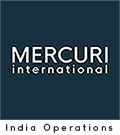A Stage Goals and Visit Objectives
A Military Example on Stage Goals
Let us take a military situation first. Imagine that you are an army General, and you have camped at a frontline post in a jungle. The headquarters have just told you that you and your platoon of 100 soldiers need to cross a river that lies 20 Km from where you are, and be on the other side by 9 tomorrow morning. Your immediate task to ensure this manoeuvre is to decide how to do it, and also have a fall back plan B. Your likely thought process would be on the following lines, although details could be different.
You will think -
1. My main aim is:- “Whole platoon should reach other side of the river by 9 A.M. tomorrow”
2. To achieve this,
- Engineers must build a bridge on the river by sunset today.
- Entire platoon must be ready before 6 A.M. tomorrow.
- Advance party must cross the bridge by 7 A.M. and report back to me over the radio.
- Rest of the platoon must begin their march not later than 7.30 A.M.
- Equipment (guns etcetera) to be taken over bridge at 8 A.M.
- All back up team must cross by 8.30 A.M.
- Engineers must begin to dismantle bridge as soon as the last soldier has crossed.
3. In case something unavoidable happens,
- At least half the men should have crossed with necessary equipment by 9 A. M.
- At least begin to cross by 9 A.M.
- Advance party should complete the reconnaissance by 9 A. M. for me to talk to HQ.
Seven sequential events under 2 above are called the stage goals. These serve as a check list to know one’s actual progress and compare it with desired or expected stage goals. If there is a variation one can think of change in tactics.
Three successively lower level (yet acceptable) objectives under 3 are called retreat aims. Each retreat aim is a well thought out and pre-planned destination – ‘where to land’ in case main aim becomes impossible.
As markets become more competitive, it is no different than war. Every sales visit must therefore have main aim and at least 3 retreat aims in the order of priority. Some examples of retreat aims in selling are: part order, trial order, approval, generating interest, re-tendering and so on.
Every sales visit must have a main aim and at least 3 retreat aims in the order of priority
One must also decide stage-goals to reach the main aim, i.e. acceptances one must receive from Customer. Some stage goals can help identify retreat aim. But a stage goal itself is not a retreat aim.
This note covers Sales Call Planning, for medium size orders requiring 3 to 5 Customer contacts. By contacts we mean face to face visits (most ideal), video meetings (okay if norm in an industry, or in extraordinary covid times), or phone meetings (not preferred). For the sake of convenience the term used in this note is ‘visit’.
Visit Objectives
Sales Effectiveness begins with knowing what exactly we want to achieve in a Sales Call. One can then plan to achieve that objective in the same or in subsequent visits, with back up plan options, in case the basic plan does not work out. Having such back ups helps the sales person stay energetic right through the call. Sales Conversion particularly in B2B deals, is not a - one call - one visit - event. Leads mature over repeated visits, and convert with skillful effort, that persists through unforeseen surprises. Having a Sales Visit Objective is therefore vital, to effective Sales Call Planning.
Visit objectives could be in one of the following four categories:
- Selling -Your visit objective could be the next stage in DAPA sales process.
- Negotiating –after achieving the basic buy in; if handling price objection does not succeed.
- Influencing key person/s, and cultivating the contact.
- Informing customer on something as value-add.
Visit objectives could be in one of the following 4 categories – Selling, Negotiating, Influencing & Informing
Serial no 1 i.e. selling objectives will form the bulk of visit objectives for most salespeople. These could be a combination of the following elements of selling.
- Identifying the true need and influencing it to generate a want.
- Acceptance from the Customer (person by person) about the key need/s identified.
- Presentation of our solution – One to one, verbally, To the group, stand up interactive presentation, Documented proposal.
- Handling of non-price objections.
- Handling of price objection.
- Closing.
Fleshing out Objectives – Product Tactics & Contact Tactics
Two tactical areas that would ‘flesh out’ such objectives are: Product Tactics & Contact Tactics.
1. Product Tactics
Based on the information you have about Customer you will form Product tactics by answering such strategic questions as:
- What is the synergy between our company’s product strategy and this Customer situation?
- Is the Customer well known; so that some products could sell automatically and you could focus on others?
- If the Customer is new for us should an attractive product be used to gain entry?
- Is he a prestigious Customer with reference value?
- Are we selling the exact alternative product or an indirect substitute?
- What is the total cost of ownerships for different possible products?
















